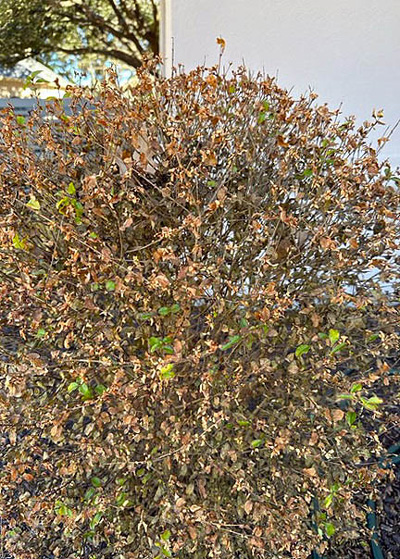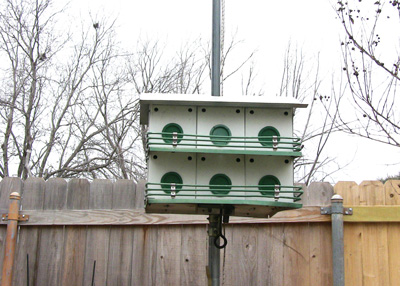Q&A – Ask Neil: February 2, 2023
(Please read these instructions carefully.)
Before you post your question, please look at recent issues to see if someone else has already asked it. You might find your answer there.
How to submit your question…
• Click the link provided below to post your question. After you submit your question, a new window will pop up giving you the address to which you can e-mail a photo to accompany your question. Clear, medium-resolution photos. (Try to avoid low-res thumbnail photos, please, in case I have to zoom in to see things.)
• Click here to post your question.
• Please only post your question one time.
• One question per reader, please.
• Please use this only for posting questions – not for standard emails.
• Watch for your answer in the following week’s e-gardens.
• I choose those of greatest general interest. For example, plant IDs seldom make the cut.
• I must have your first name or initials.
• I must have your city or county. (Texas is a very large state.)
QUESTION 1
WILL WATER OAK LOSE STABILITY DUE TO LOSS OF ROOTS?
Question: Will our huge water oak lose any of its stability because the cable company cut so many roots while laying fiber optics? Joyce M., Longview.

Answer: From what I can see in the photo I would doubt it. I’m assuming that’s the water oak standing partially on-camera on the right side? There are ample roots in all other directions, plus the trench looks like it’s a fair distance from the trunk.
QUESTION 2
WHAT IS WRONG WITH MY CHRISTMAS CACTUS?
Question: What is happening to my 30-year-old Christmas cactus? It’s also present on one beside it. Carol D., College Station.

Answer: These are scale insects. At one stage in their lives they move about slowly as crawlers, but then they affix themselves to the plants’ leaves and stems so firmly that it becomes very difficult to remove them. You can pop them off with a fingernail or knife blade just to see how they attach. The best way to eliminate them is to apply rubbing alcohol with a cotton swab or a cotton rag with brisk rubbing. You must be careful not to break the stem segments, so the cotton swab may be the better alternative in this case. You will not get rid of all of the scales your first time through, plus there will be young scales hatching and developing all along. In both cases you will need follow-up treatments. In the future, try to get them stopped early. It will be a lot easier.
QUESTION 3
IF THE TOP DIED OUT OF A SMALL NEW RED OAK, WILL A NEW SHOOT TAKE OVER AS THE LEADER BRANCH?
Question: The top few inches of a small red oak we planted in fall 2021 died after last summer’s drought. Will a new leader branch take over, or is it structurally unsound and better to start over? Ivy C., Somerville.
Answer: Without a photo it’s a bit difficult to answer. It should not be structurally unsound. A new shoot will become the dominant trunk. What I can’t tell you is whether it will be growing in a direction that you will like. It’s going to be up to you to trim and train the growth, perhaps even by removing the top-most shoot down to one that has the least crook in the trunk. As the tree grows and the trunk thickens it will camouflage the fact that the top ever died back. At least that’s how I picture it in my mind’s eye.
QUESTION 4
WHY WOULD LIVE OAKS HAVE SHED MOST OF THEIR LEAVES IN DECEMBER AND JANUARY? THEY TURNED BROWN BEFORE FALLING.
Question: This year on our property a number of live oaks shed most of their leaves in December and January. The leaves turned brown before falling and there’s no evidence of new leaf formation. Was drought the cause? Will they recover? Doug M., Coleman County.
Answer: If drought had caused the problem they would have turned brown during the summer or early fall and they would have remained attached to the trees. This is almost assuredly due to the Christmas freeze that gripped most of Texas. It’s happened many times over the decades. Live oaks that normally drop their leaves in late February or March dropped them many weeks earlier because of the cold. In almost all cases they will bud out again normally come spring. Just sit tight.
QUESTION 5
WHAT IS THE LIFE CYCLE OF SPIDER MITES?
Question: What is the life cycle of spider mites? It’s almost impossible to spray an insecticide or even a strong water spray under every leaf. Steve. V., Ellis County.
Answer: Spider mites are the most omnipresent pests (not true mites) in Texas landscapes and gardens. I’ve already seen them on upright junipers in Collin County, and they’ll be bothering many other species clear up until frost this fall. They overwinter on site, so you need to learn to recognize them as they get started so you can treat before they get out of hand. The problem comes in finding an effective insecticide that is cleared for spider mites on edible crops. Use a pump sprayer, not one that attaches to the end of your garden hose, so you can spray up beneath the leaves. It’s the only way you’re going to control them.
QUESTION 6
IS IT WORTH BUYING NURSERY PLANTS THAT ARE ROOTBOUND?
Question: Sometimes in the nursery I see plants that are very rootbound, with roots growing out the drainage holes. Are they worth buying, and if so, what can be done to their roots to encourage them to spread? Darya F., Alvarado, Johnson County.
Answer: If it looks like those roots were growing extensively into the ground beneath the pots you may be taking a chance on the plants’ survival. At a minimum you’ll need to trim away 30 or 40 percent of the top growth to compensate for the loss of those roots. You’ll also want to remove most of those external roots since they will have long since dried out. As for the roots that are inside the pots, use a utility knife to cut vertical slits through the outer layer of the root ball. As you cut the encircling roots you’ll be encouraging new, branching roots to develop. You might even be able to use your fingers to pull the outer portion of the potting soil loose to aid in that new root growth.
QUESTION 7
WHAT WOULD BE A GOOD REPLACEMENT FOR SWEET VIBURNUMS THAT WE HAVE FINALLY LOST DUE TO SHADE AND THE 2021 COLD?
Question: We had sweet viburnums planted along our back fence for 26 years. Due to our trees growing larger and resulting shade the viburnums had thinned. The cold of February 2021 finished them off. Can you recommend a good replacement shrub? Richard R., San Antonio.
Answer: Absolutely. Nellie R. Stevens hollies. They grow to be 15 to 20 ft. tall and 10 to 12 ft. wide if given good care and kept properly watered. They’re also equally well suited to sun or shade. They are totally winter hardy, plus they have the bonus of large red berries all winter. One caution: water them by hand with a water bubbler for their first 2 or 3 summers. They don’t wilt when they’re dry and it’s possible to let them go beyond the point of no return without realizing it.
QUESTION 8
WILL THIS CHINESE PISTACHIO EVER HAVE THE TYPICAL UMBRELLA SHAPE?
Question: This Chinese pistachio was planted just before we moved in 2 years ago. It seems to be doing well, but its shape concerns me. Will it ever have the typical umbrella shape with those two rangy branches at the top? Melody P., Hudson Oaks/Weatherford.

Answer: I share your concern. I would trim off the branch leaning out on the right. I’d probably also cut off some of the other shoot to encourage more normal branching. This tree is going to need a significant amount of training to get it where you want it to be. It also should have had its trunk wrapped to protect it against sunscald and borer invasion. That is, in my opinion, non-negotiable for pistachios, red oaks and red maples, yet it’s seldom done.
QUESTION 9
WHAT SHOULD WE DO WITH OUR SUNSHINE LIGUSTRUMS?
Question: My Sunshine ligustrums have been brown since the early freeze we endured. I have many! Should I leave them alone for now, or do they need to be trimmed back? (Same question for dwarf and petite crape myrtles.) Susan D., Fort Worth.

Answer: Poor Sunshine ligustrums were brutalized all across North Texas by the Christmas cold. If your plants are uneven in height you could even them up now, but any pruning to correct freeze damage would be better left until they start to leaf out. That way you could determine how much dieback (if any) they suffered.
QUESTION 10
WHEN IS THE BEST TIME TO PUT UP PURPLE MARTIN HOUSES IN THE METROPLEX?
Question: When should I put my purple martin house up? Steve R., Arlington.

Answer: To find the best possible answer I consulted the website of the Purple Martin Conservation Association. Looking at their map, it appears that the first two weeks of February would be prime time for most of Texas (including Arlington).
